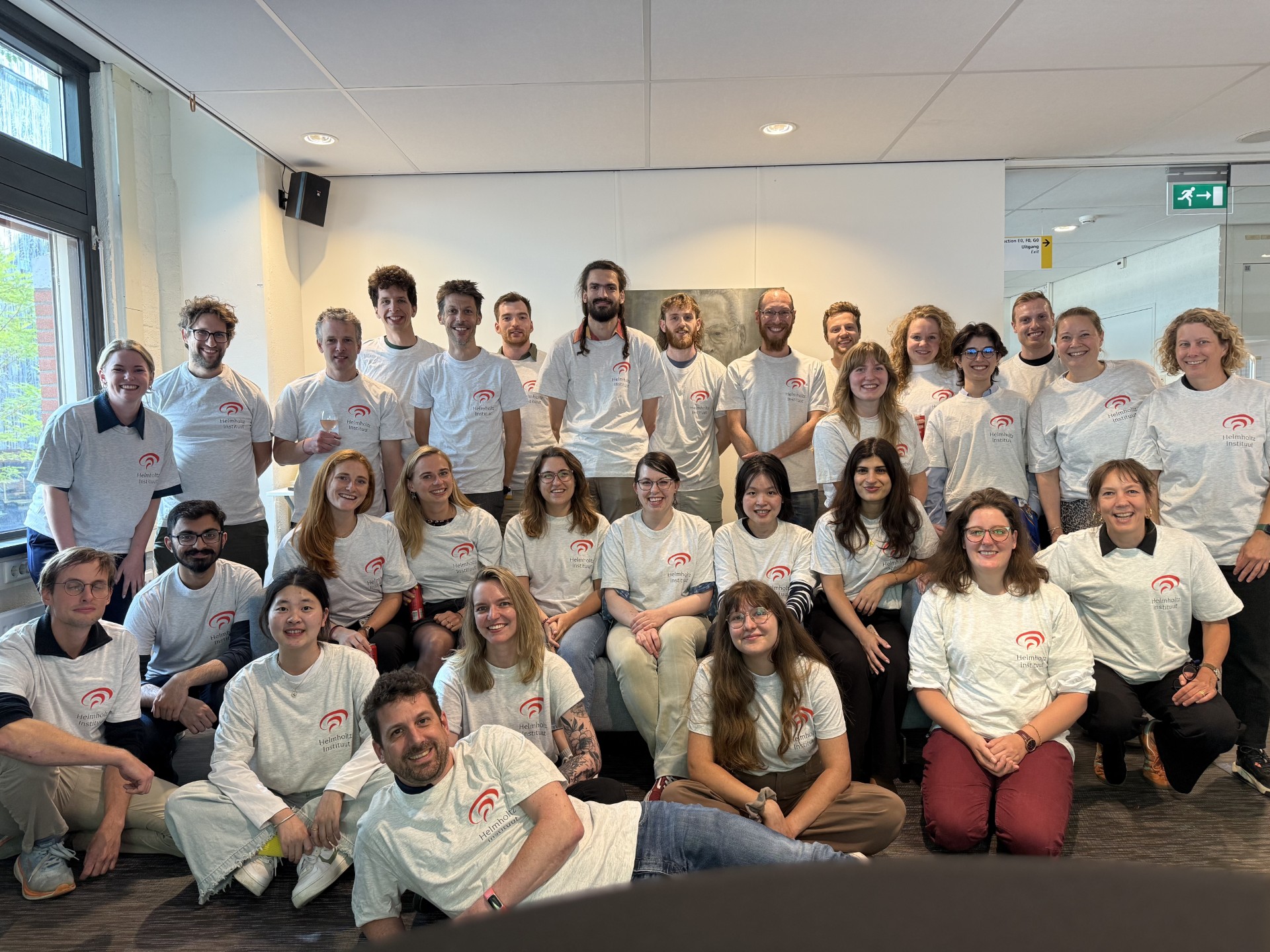Background
From the UBI to the Helmholtz Institute for Autonomous Systems Research
The Helmholtz Institute has its roots in the Utrecht Biophysics Institute (UBI). The UBI was established in 1990 and its research program comprised the study of biological autonomous systems interacting with their physical environment. It consisted of research groups from the faculties of Physics, Biology and Medicine of Utrecht University (UU). The TNO/TM Institute at Soesterberg was an associated member. The UBI expanded in 1993 by including a group from the faculty of Informatics and two other associated groups, one from the Erasmus University Rotterdam (Faculty of Medicine) and the other from the University of Amsterdam (Faculty of Informatics). Together these groups established a new institute, the Helmholtz Institute for Autonomous Systems Research. In 1994, this Institute was accredited as a national research school by the KNAW.
Changes in mission and politics
Developments in the Institute itself as well as at the levels of local and national research policies have led to changes in the scientific mission and composition of the Institute. One of the prime goals of the Institute was the stimulation of scientific research and education at the intersections of physics, medicine, biology, mathematics and informatics of autonomous systems. However, interaction between the groups, especially at the level of the PhD students, remained below an acceptable level. Moreover, the composition of the Institute was changed as a result of university or faculty policies. The University of Amsterdam did not allow the department of Computer Science to become a full member of the Institute. The faculty of Medicine (UU) urged a few small research groups to reconsider their research goals in favour of research strategies of the faculty. A further reason to reconsider the Institute was the initiative of the Minister of Education, Culture and Science to select a number of top research schools.
The wide range in research interests divided the original Institute in 1997 into two streams. One stream concentrated its research and education on biological systems. The other stream focussed on artificial systems and established the new Image Sciences Institute and its research school ImagO. That school received the KNAW accreditation in 1999.
Helmholtz Research School and Helmholtz Institute
The groups working on biological systems found new partners in the department of Psychology of Utrecht University (faculty of Social Sciences), the departments of Neuroscience and Audiology of the Erasmus University Rotterdam (faculty of Medicine), the department of Experimental Audiology of the Free University Amsterdam and the department of Clinical and Experimental Audiology of the University of Amsterdam. Together they established a new research school, the Helmholtz Research School. The school received KNAW accreditation in 2000.
The groups at Utrecht University that participate in the Helmholtz School continue their cooperation in a revived research institute, the present Helmholtz Institute.
Background – H.L.F. von Helmholtz
Multidisciplinary scientist
 The German scientist Hermann Ludwig Ferdinand von Helmholtz (1821-1894) can be equally well regarded as a physicist, physiologist, physician, biologist, mathematician, philosopher, or engineer/inventor. He made important discoveries in physiology, optics, electrodynamics, mathematics, and meteorology. His multidisciplinary training, approach and interests and his cross-fertilisation of research fields are seen by the members of our Institute and School as a goal worth striving for. Most of the fields and topics on which the present members of the Helmholtz Institute and Helmholtz School work, found their first proper recognition and formulation in the work of this nineteenth century scientist.
The German scientist Hermann Ludwig Ferdinand von Helmholtz (1821-1894) can be equally well regarded as a physicist, physiologist, physician, biologist, mathematician, philosopher, or engineer/inventor. He made important discoveries in physiology, optics, electrodynamics, mathematics, and meteorology. His multidisciplinary training, approach and interests and his cross-fertilisation of research fields are seen by the members of our Institute and School as a goal worth striving for. Most of the fields and topics on which the present members of the Helmholtz Institute and Helmholtz School work, found their first proper recognition and formulation in the work of this nineteenth century scientist.
From medicine to physics
 For financial reasons Helmholtz had to choose a training as a medical doctor in the army (graduated in 1843), even though his heart was more with physics and mathematics. He became a professor of Physiology in Königsberg (1849), of Anatomy and Physiology in Bonn (1855), of Physiology in Heidelberg (1858), and of Physics in Berlin (1871). In 1888 he became the first president of the Physikalisch-Technischen Reichsanstalt in Charlottenburg.
For financial reasons Helmholtz had to choose a training as a medical doctor in the army (graduated in 1843), even though his heart was more with physics and mathematics. He became a professor of Physiology in Königsberg (1849), of Anatomy and Physiology in Bonn (1855), of Physiology in Heidelberg (1858), and of Physics in Berlin (1871). In 1888 he became the first president of the Physikalisch-Technischen Reichsanstalt in Charlottenburg.
During his career he worked on:
- Physiology (1847): Try to explain physiological phenomena in terms of physics and chemistry; Animal heat; Muscle contraction
- Sensory physiology (1850): Velocity of nerve impulses
- Physiological acoustics (1863): Resonance theory of hearing
- Physiological optics (1851): Invention of the ophthalmoscope (1851) and ophthalmometer (1864)
- Physics (1870): Try to relate electrodynamics with the conservation of energy
Moreover, in mathematics he worked on the foundations of geometry; in physics on hydrodynamics (including vortices and instabilities), optics and electricity; and in philosophy on epistemological problems.
His work on special topics like music theory, tone perception, colour vision, binocular vision, eye movements, eye optics also brought him much fame and is still highly relevant today. With his invention of the ophthalmoscope Helmholtz initiated a rapid development of ophthalmology. The Helmholtz resonator, which he used to analyse sound, is still used in studies of sound absorption.
In summary, he studied complex (autonomous) systems with a mastery of all available conceptual and empirical research tools.


